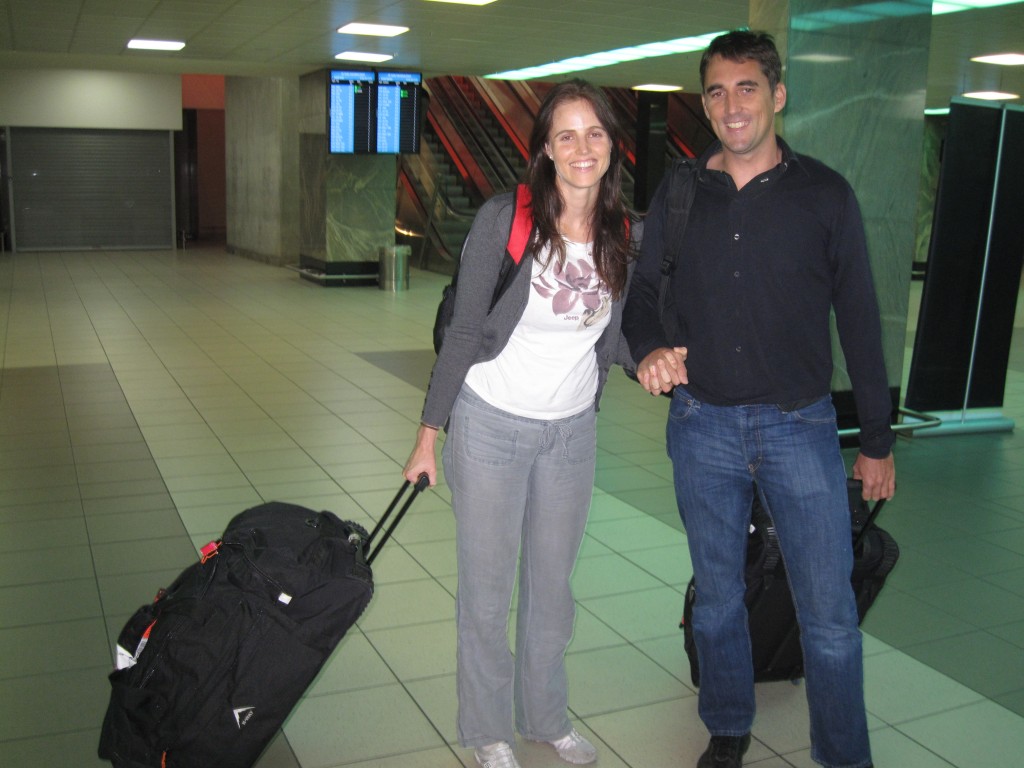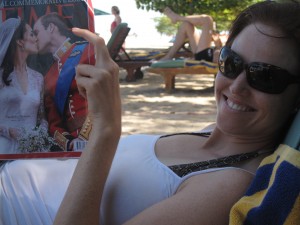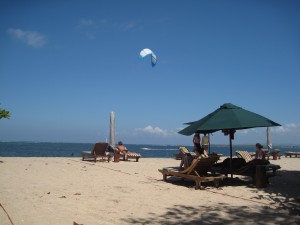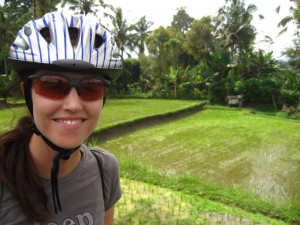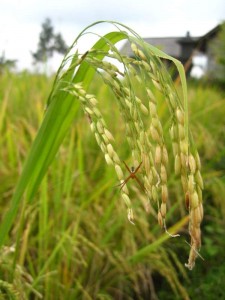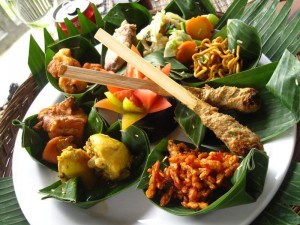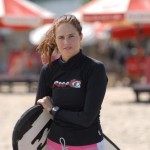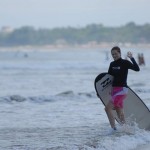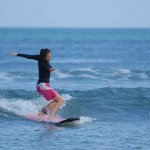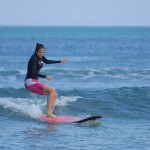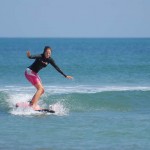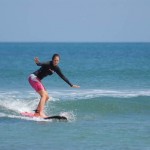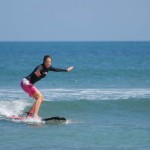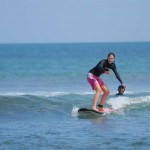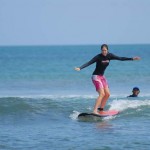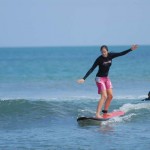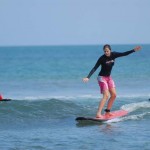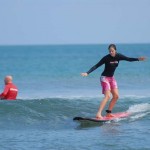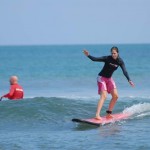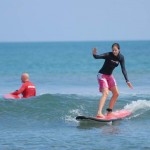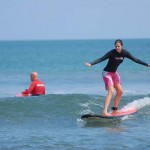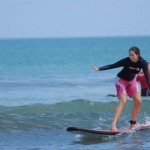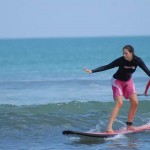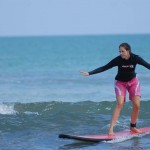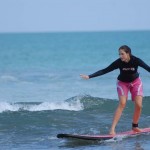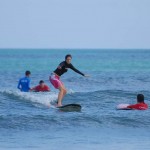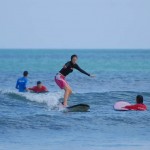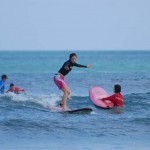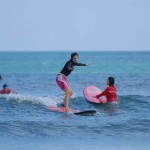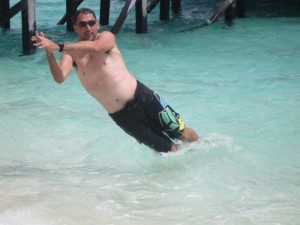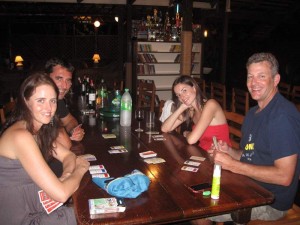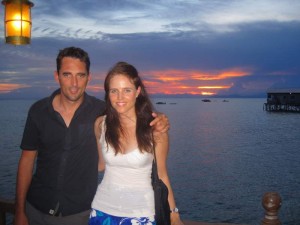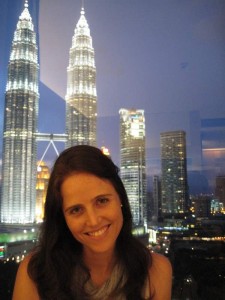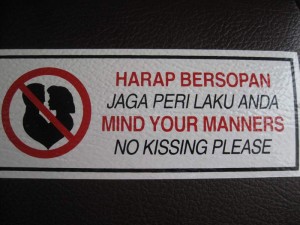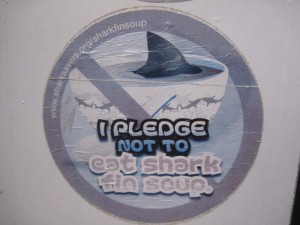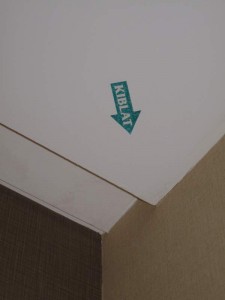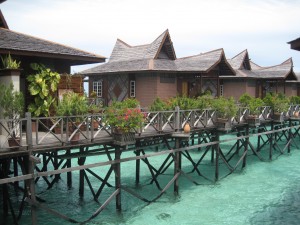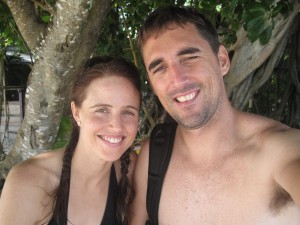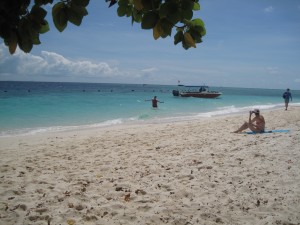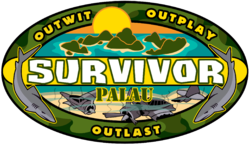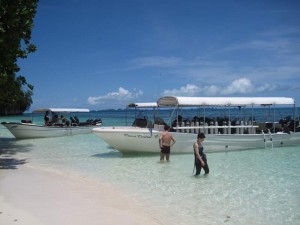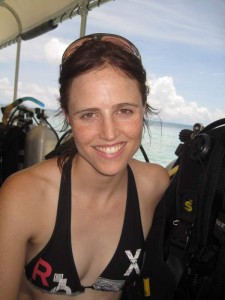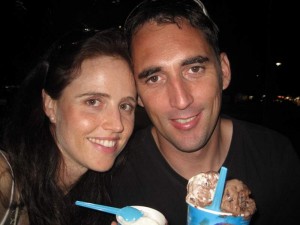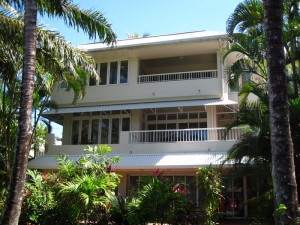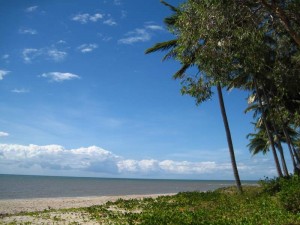
Sunset on White Beach
Our next stop in South East Asia was the Philippines. Not knowing where was best to head to in this vast and diverse country, Andy and I decided to be guided by the “best beach in the world” claim of Boracay, one of the 7000 islands in the Phillipines. Problem is, when the secret got let out of the bag a few years ago of this island paradise, tourism sky-rocketed to create a thriving holiday destination. Goodbye idylic island! Hello beach party galore! Imagine a 4 kilometer powdery white, wide sand beach, next to a flat, crystal-clear blue sea. Hotels, trendy bars, clubs and restaurants, that pump music way into the early hours of the morning, were found all along the fringe of the beach.

The quieter side of the Island
The sea is bustling with sailboats, jet-skis, banana boats and parasails. Anything your water adventure spirit can dream of! The beach was constantly teaming with foot traffic – and the funny thing was, we were there during the off-season.
It was fun to experience. Being the party animals that Andy and I are (ha!) we thankfully stayed on the quieter side of the island, and could choose to immerse ourselves in the mosh-pit at our discretion. Using TripAdvisor (my new favourite website), we could research restaurants. This helped us sift through the hundreds of eateries of almost any cuisine you think of. (Mmm, no South African restaurant though!)

Parasailing!
Our aim in choosing activities, was to not do anything touristy. With watersport vendors approaching you intermittently all along the beach, this was easier said than done. Andy indulged my desire to go parasailing, so we gave in and gave that a try one afternoon. The sun was sinking low when we went up, and we were able to get a bird’s eye view of the island with some beautiful sunset colours. Another “must do activity” was sailing.
Andy’s idea of fun was to hire a scooter to explore the island (10 square km in size). This terrified me, having seen the chaos of the traffic. The main street looks like a typical Asian street: a narrow avenue lined with tightly packed stalls on either side. The uneven road surface is teaming with two, three and four wheeled motorised and non-motorised vehicles, all dodging each other as well as pedestrians. Here a honk is a courteous gesture to warn of an approach.

Andy, a natural on the scooter
The best way to get around was by motorised tricycle: a motorbike to which has been attached an enclosed side cart for carrying up to four people at a tight fit, though we saw many more people pile into them at times. After a while I realised that the chaos on the roads were organised chaos. The drivers are all calm (no road rage here), even though they are either stopping right in front of each other (to load and off load), overtaking, turning in front of each other, u-turning, and narrowly missing each other. There are no road rules, but the general understanding amongst drivers ensures that there are no accidents whatsoever.

The motorised tricycles
So, Andy tackled this “chaos” on the scooter, with me clutching for dear life behind him. We slowly navigated our way through the main street and headed out to the less busy areas of the island, where we could pick up some speed and feel the wind in our hair. We were able to find more remote coves and beaches and wondered why the holiday-makers still flock to the main, over-crowed beach. It seems that the main attraction is the vibe and festivities for most, and the beautiful backdrop doesn’t hurt either.
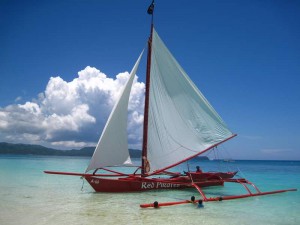
Our sailboat
On another day we chartered a sailboat to a neighbouring island, where we snorkeled and were treated to a local beach barbeque. Our captain, who also owns his own pub on the beach (Red Pirate’s), was quite animated, and we got a good insight into Filipino Island life. He had marinated the barbequed fish himself. Filipino food is apparently milder than other Asian cuisine. Also, Filipinos do not eat with chopsticks like most of Asia, they use western cutlery: a spoon and fork (rather than a knife and fork). Interestingly, another differentiator is that the predominant religion in the Philippines is Christian, as opposed to its neighbours.
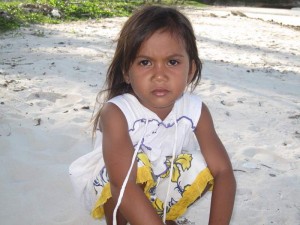
A local girl we interacted with on the beach
For a nice change, our money was able to go a little further here than what we have been used to. For instance, a happy hour cocktail cost us the equivalent of R10, compared to about R100 in Australia. Crazy stuff! A dorm room could be as little as R35 a day, which makes it popular amongst the backpackers. There are of course the high-end resorts too, but at least the place caters for every budget. Boracay attracts travellers from all over the world, but the majority were Asian due to its proximity of course. (It’s quite a trek from the West to get here!) Mixed race couples are not uncommon, the main combination being older Caucasian men with younger Asian women.
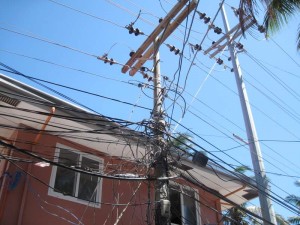
Check out the wiring - only in Asia!
I tried to put my finger on the reason for its popularity. One theory we heard was that White men prefer the Asian women because White women are difficult and picky. Another is that Asian women get treated better by the White men. It’s obviously a mutually beneficial arrangement!
One thing that was difficult to get used to, was the heat. The clear skied and windless days might be the perfect conditions for the average holiday-makers, but it made for blistering hot days! We were continually cooling off in the sea, pool, or shower! The evenings were lovely though. (I love it when I don’t need to carry a shawl or cardigan with me at night.)

Enjoying a ride on the motorised tricycle
With the heat, and tropical climate came the bugs of course. While I never really experienced mosquitoes buzzing around me, every day I counted more bite marks. These Filipino bugs are stealthy!
Last, but not least, we were very impressed by the Filipino people. They are such a gentle and hospitable nation. We were always greeted by the locals wherever we went. No wonder so many of them get hired on cruise ships due to their servant-hearted nature. We heard a statistic that 46% of the national household income is earned by the 11 million (that’s 10% of the population) Filipinos working abroad and sending the money back home. That’s staggering!
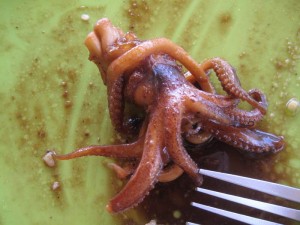
Trying out the local cuisine - squid!
While Boracay was by no means a true reflection of authentic Philippines, we certainly did get a taste. We would love to return, but will definitely explore some of the other sights that the country has to offer.


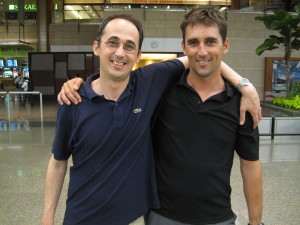
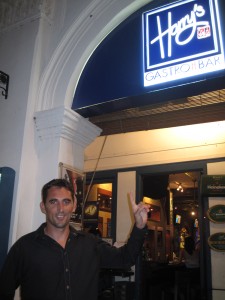
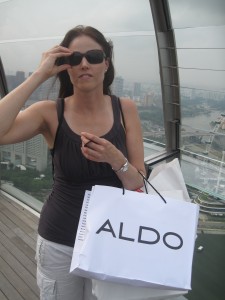
![250px-IMG_1084_MBS_for_wiki_3700px[1]](https://aroundtheworldin90days.co.za/wp-content/uploads/2011/06/250px-IMG_1084_MBS_for_wiki_3700px1.jpg)
